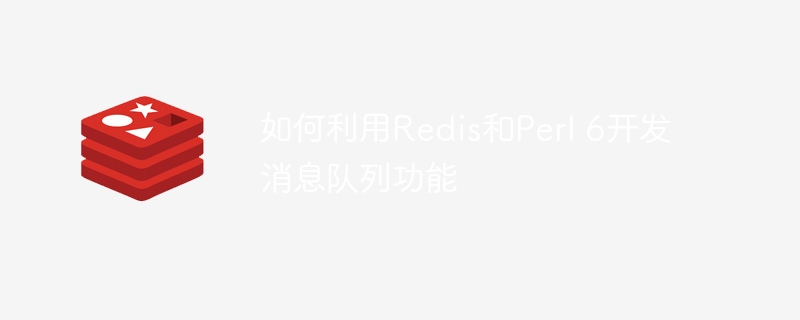How to develop message queue functions using Redis and Perl 6
- WBOYOriginal
- 2023-09-21 15:04:44913browse

How to use Redis and Perl 6 to develop the message queue function
Introduction:
In modern application development, the message queue is a very important component. It enables decoupling between applications, improves system scalability and performance, and helps implement asynchronous processing. In this article, we will explore how to develop a simple yet powerful message queue system using Redis and the Perl 6 programming language, and provide specific code examples.
1. What are Redis and Perl 6?
- Redis is a fast, open source in-memory key-value storage database. It supports a variety of data structures, such as strings, hashes, lists, sets, etc., and provides a wealth of operation commands. Redis is usually used in scenarios such as caching, message queues, and statistical data aggregation because it can quickly read and write memory data and exhibit extremely high performance.
- Perl 6 is a powerful, multi-paradigm programming language. Its design goals are to provide better readability, scalability, and maintainability. Perl 6 supports multiple programming paradigms, including object-oriented, functional, and reactive programming.
2. Install Redis and Perl 6 environment
- Install Redis: Depending on the operating system, you can choose to download the installation package from the Redis official website, or use the package manager to install.
- Install Perl 6: You can download the Perl 6 compiler through the rakudo.org website and install it according to the instructions. Alternatively, if you are using a Linux system, you can install it using a package manager.
3. Use Redis and Perl 6 to create a message queue
The following is a sample code for using Redis and Perl 6 to create a message queue:
-
Production Producer code (producer.p6):
use Redis; my $redis = Redis.new; # 循环产生消息 for 1..10 { my $message = "Message $_"; # 将消息推送到队列中 $redis.lpush("message_queue", $message.encode); say "Produced: $message"; } -
Consumer code (consumer.p6):
use Redis; my $redis = Redis.new; # 持续监听队列中的消息 while True { # 从队列中获取消息 my $message = $redis.brpop("message_queue", 0)[1].decode; say "Consumed: $message"; }
In the above code, the producer continues A message is generated and pushed to a queue named "message_queue", while the consumer continues to listen to the queue and consumes the message once it is obtained. Use the Redis lpush and brpop commands to push messages to the head of the queue and get messages from the tail of the queue respectively.
4. Run the sample code
-
Start the producer:
$ perl6 producer.p6
You will see the output of the producer continuously generating messages.
-
Start the consumer:
$ perl6 consumer.p6
You will see the output of the consumer continuously consuming messages.
3. Summary
This article introduces how to use Redis and Perl 6 to develop a simple message queue system, and gives specific code examples. By using Redis's queue data structure and the power of the Perl 6 language, we can easily create a reliable and efficient message queue, thereby improving application performance and scalability. I hope that readers can gain a deeper understanding of the principles and development methods of message queues through the introduction of this article, and apply them in actual projects.
The above is the detailed content of How to develop message queue functions using Redis and Perl 6. For more information, please follow other related articles on the PHP Chinese website!

